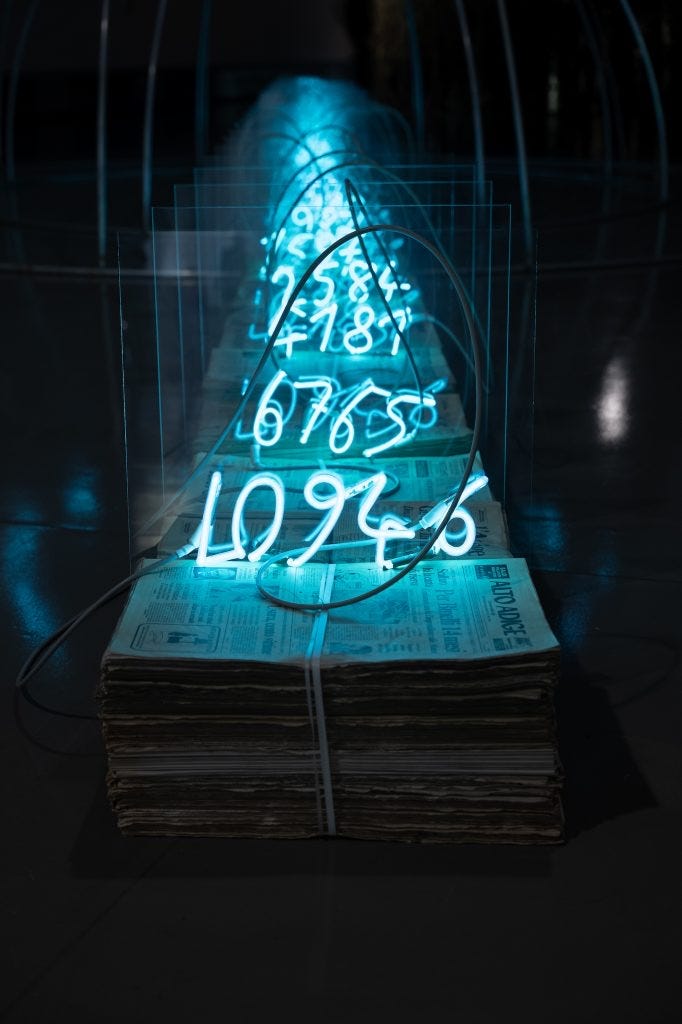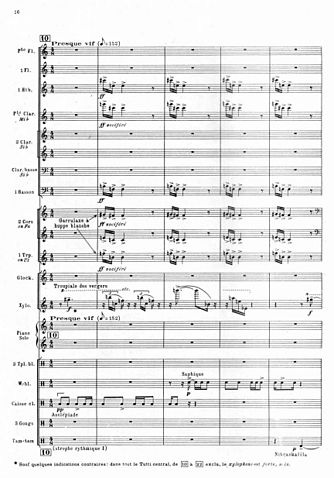At Sixes and Sevens: Symbols and Signs for March 25
You Say It’s Your Birthday. It’s My Birthday Too YEAH
I’m a sucker for symbols and signs. I’m no mathematician, but I love the aesthetics of numbers, the historical resonance of a calendar.
I’m 67 today, March 25. I had a feeling this beauty of an integer would be special. 67 is a prime, the 19th prime, a “sexy” prime, and a favorite of the avant-garde for centuries.
Why? Because 67 is, mathematically, indivisible, unique, and unpredictable.
That’s a trifecta of inspiration.
Birthday reflections in a French Quarter cocktail shaker. Doesn’t it look like a musical instrument? It’s shaped like a penguin.
Fine artists like Italian Mario Merz, (installation of the Fibonacci numbers), American Sol LeWitt, (his op art walls) and German artist Hanne Darboven (minimalist numeric tables)— all dove deep into prime numbers, including 67.
Same with the French music composer Olivier Messiaen. Messiaen also composed with birdsong! . .. I can see I’ll be listening to him some more.




The 6/7 Roll of the Dice
I’ve decided that instead of saying I’m sixty-seven, a more bewitching description could be, “I’m at sixes and sevens.”
I’ve heard that expression all my life but never knew where it came from. It means, “messy, inbetwixt,” yes? — Perhaps a little cross. But from where?
Some people think it came from a game of chance, dice, in the 1300s. Others say it arose from a complicted dispute between two fur traders.
Along comes Chaucer, where we find the first written record:
Lat nat this wrechched wo thyn herte gnawe, But manly set the world on sexe and seuene.”
(“Let not this wretched woe gnaw upon thy heart, but stake the world like a man on a cast of 6 & 7 dice”).
I became familiar with the saying, when showed up in 70s popular queer and black culture, such as in The Wiz (1978) when Miss One gives Dorothy the silver slippers and says, “Oh, don’t be all sixes and sevens, honey.”
How can you resist?
My Touchstones on the Date
On March 25 in 1807, the British Parliament abolished the slave trade throughout the British Empire.
Parliament only called the ban after abolitionists had sweated blood, and put their lives on the line, repeatedly, without respite, for decades. It was not a non-violent protest, that’s for sure. And to think we are still fighting the very concept of slavery today.
A brutal moment in American revolutionary history was March 25, 1911, the day of the Triangle Shirtwaist Factory fire in New York City, which killed 146 garment workers, Italian and Jewish immigrants. Mostly women. The first couple to jump out the flaming windows embraced with a kiss before they fell.
When 9/11 happened, people recalled the bodies falling in 1911.
You will read in textbooks that the Triangle event “led to reforms in labor laws.” Ha! As if the factory owners or congress scratched their beards sagely and decided to do the right thing.
No.



